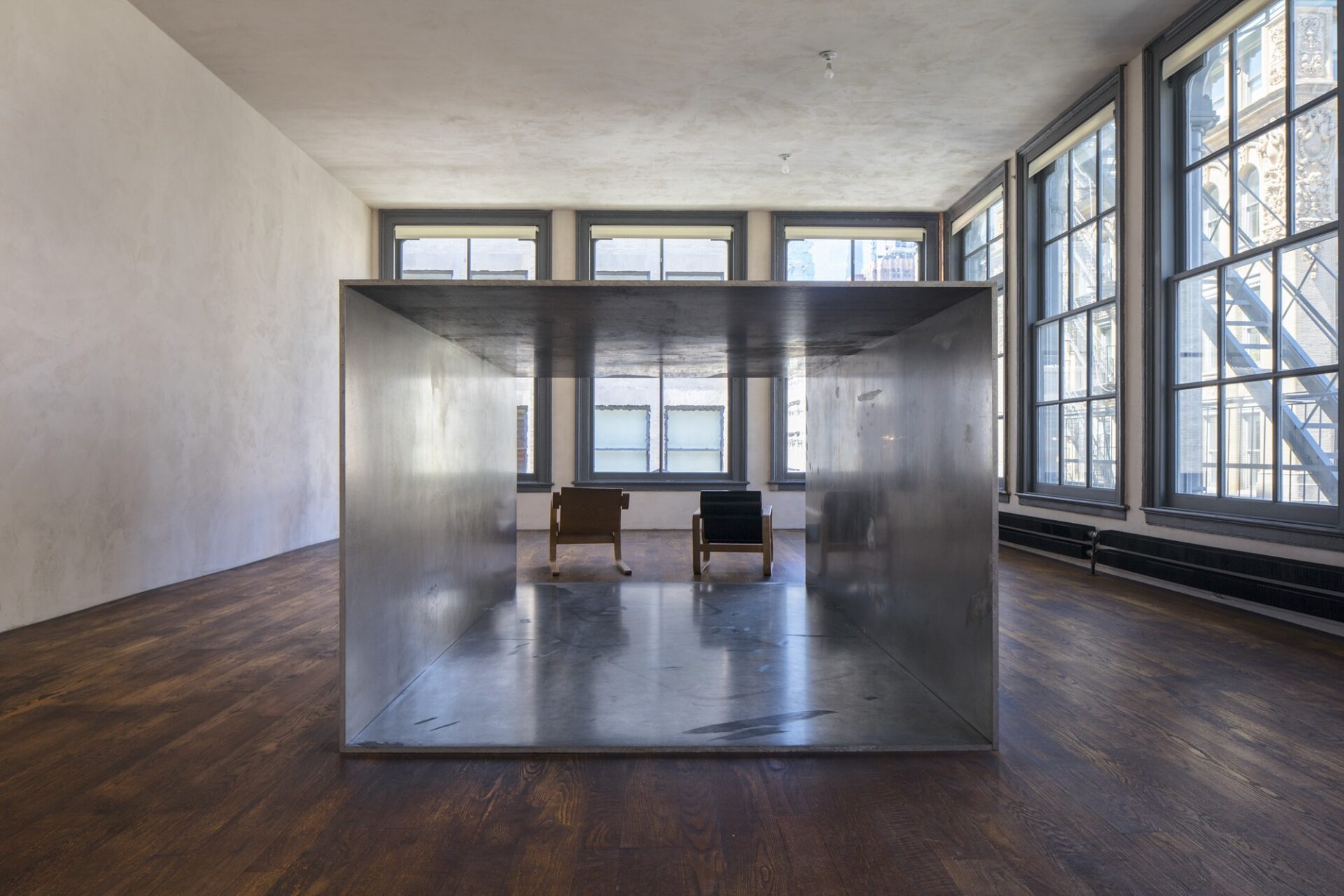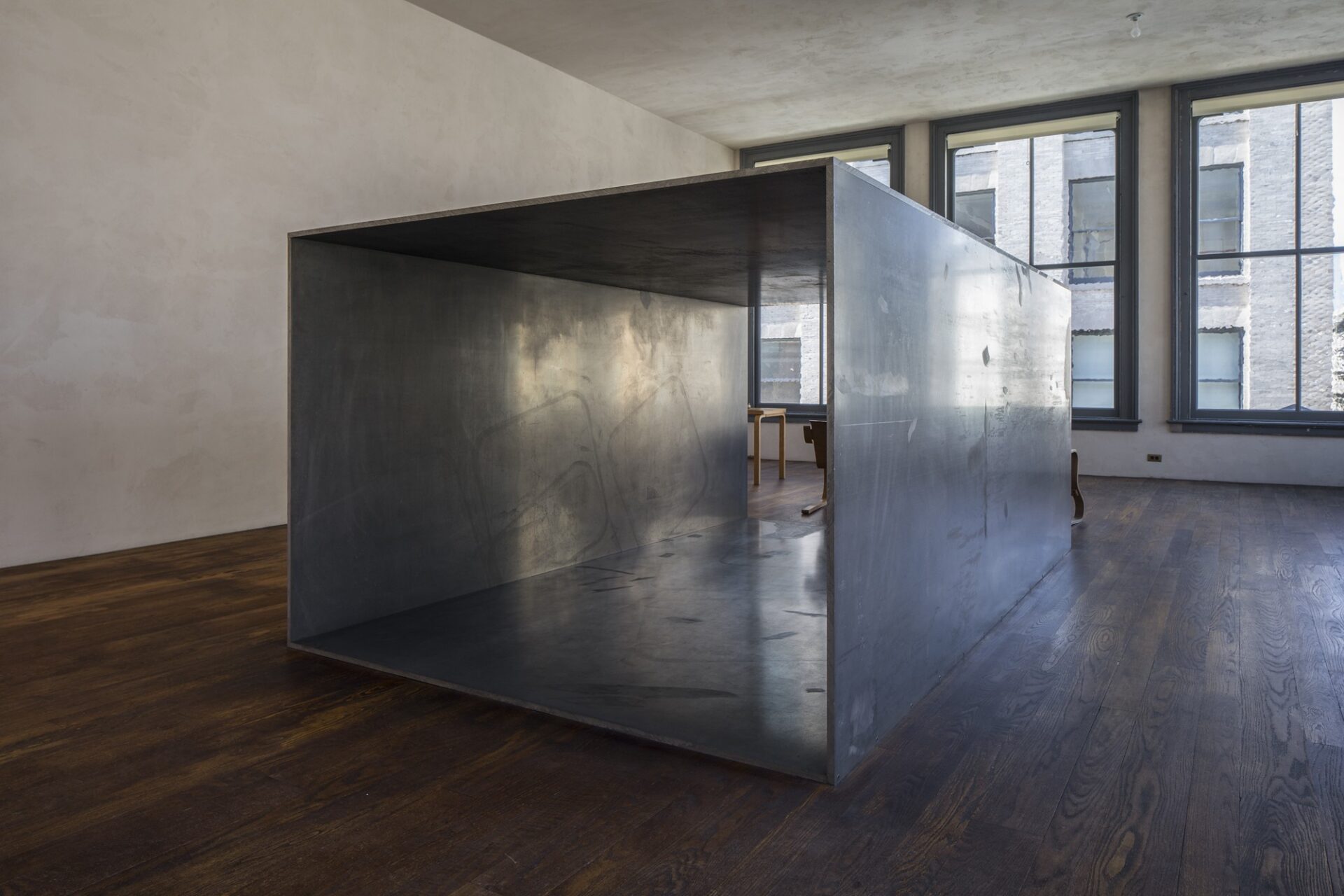“I dislike sculptural bulk, weight and massiveness,” Donald Judd said in a 1971 interview, in regard to this piece. “The big box shown at the Metropolitan Museum weighs four thousand pounds, but it doesn’t look heavy even though it’s a great big tube covering an incredible volume of space.”1 According to studio assistant Jamie Dearing, installing the work on the third floor of 101 Spring Street required the removal of two large windows from the Mercer Street side of the building so that the panels could be brought in and then assembled with the help of a rigging company.
This work was first exhibited in New York Painting and Sculpture: 1940–1970 at the Metropolitan Museum of Art (October 18, 1969–February 1, 1970). This exhibition included over four hundred paintings, sculptures, and drawings by forty-three artists, including Dan Flavin, Mark di Suvero, Barnett Newman, Claes Oldenburg, and Frank Stella. As Henry Geldzahler, curator of the Metropolitan’s Department of Contemporary Art, said of the organization of the exhibition, “My guiding principles in deciding which artists to include in the exhibition . . . have been the extent to which their work has commanded critical attention or significantly deflected the course of recent art. These ‘deflectors,’ as they may be called, are those artists who have been crucial in redirecting the history of painting and sculpture in the past three decades. My aim has been to choose works of quality and stature by those artists who have posited the major problems and solutions of our immediate tradition.”2
Shortly after the close of the Metropolitan exhibition, the piece traveled to Japan, where it was exhibited at Expo ’70, the 1970 World Exhibition in Osaka (March 15–September 13, 1970). This was the first world exposition hosted by an Asian country and one of the largest and best-attended expositions in history, with the number of visitors reaching over sixty-four million, more than half of Japan’s population at the time.

